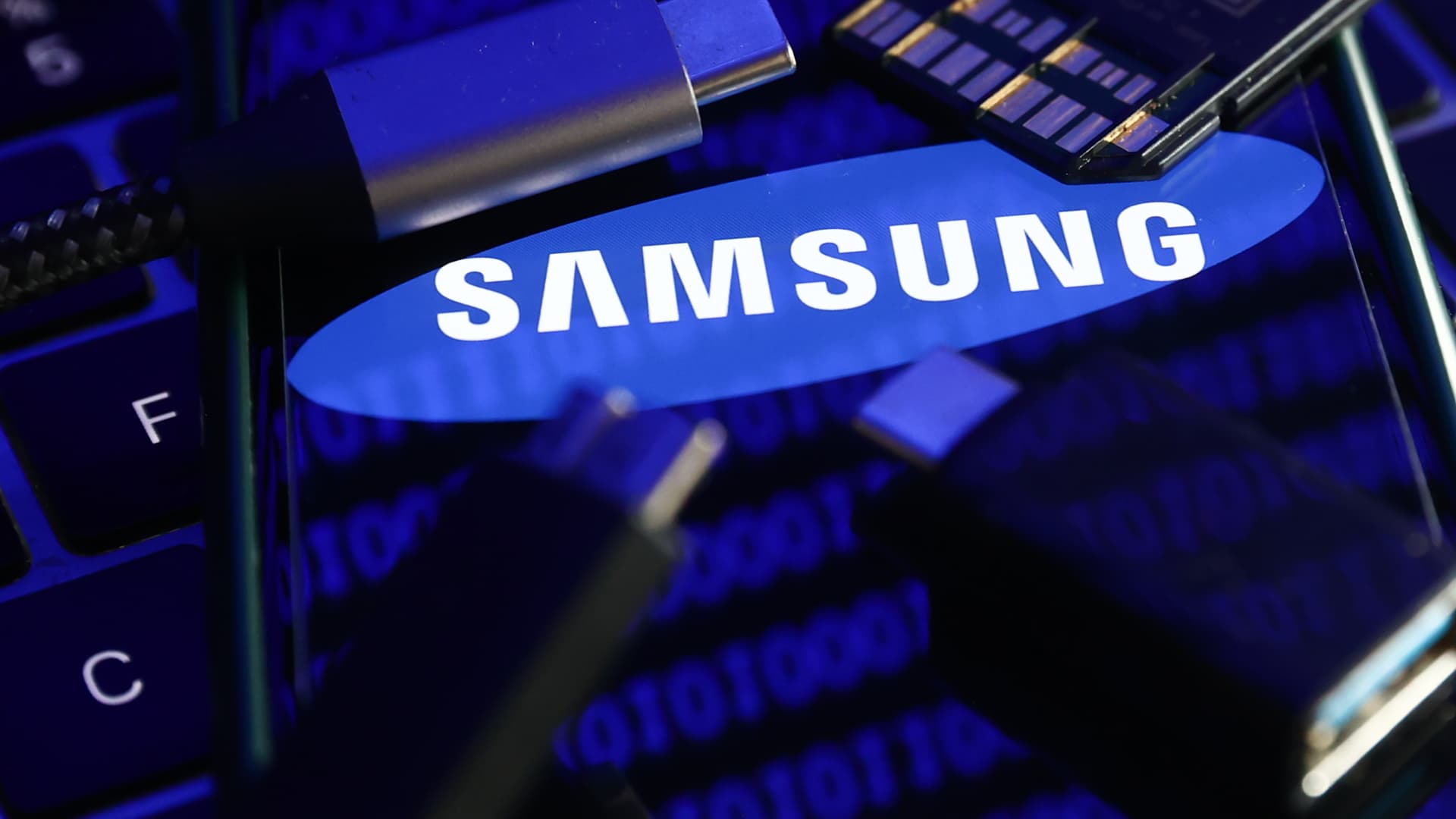
Samsung logo displayed on a phone screen with a binary code reflected on it, a laptop keyboard, a memory card, an adaper and cables are seen in this illustration photo taken in Krakow, Poland on January 30, 2023. (Photo by Jakub Porzycki/NurPhoto via Getty Images)
Jakub Porzycki | Nurphoto | Getty Images
Samsung Electronics on Wednesday posted a 34.57% drop in operating profit in the fourth quarter from a year ago, in line with its guidance issued earlier this month.
Here are Samsung’s fourth-quarter results versus estimates:
- Revenue: 67.78 trillion Korean won (about $51 billion), vs. 69.27 trillion Korean won expected by LSEG analysts
- Operating profit: 2.82 trillion Korean won, vs. 3.43 trillion Korean won expected by LSEG analysts
Samsung’s revenue for the quarter ending December fell 3.8% from a year ago, while operating profit dropped 34.57% in the same period.
In its earnings guidance earlier this month, Samsung said it expected operating profit for the October-December quarter to be 2.8 trillion South Korean won ($2.13 billion), down 35% from the same period a year ago when the firm reported an operating profit of 4.31 trillion won.
Samsung said its fourth-quarter revenue and operating profit improved from the third quarter due to a recovery in memory chip prices and “continued strength” in sales of premium display products.
Samsung is the world’s largest maker for dynamic random-access memory chips which are found in consumer devices such as smartphones and computers.
Daiwa Capital Markets in a Jan. 9 report said Samsung’s revenue and operating profit estimates were “lower than our market estimates.”
“We assume that memory business earnings improved sharply on increased memory shipment and prices,” said SK Kim of Daiwa Capital Markets after Samsung’s preliminary earnings.
As global macroeconomic headwinds persist, Samsung expects its earnings in the first six months of 2024 to show a “moderate improvement” followed by “a more significant improvement” in the second half of the year.
Memory recovery to continue in 2024
Memory chip prices plummeted drastically last year due to inflationary pressures that have caused consumers to cut back on smartphone and PC purchases, as well as excess inventories of chips that companies stockpiled during the pandemic.
This has hit Samsung’s earnings hard, with its operating profit plunging 77.6% in the third quarter from a year ago. Other chipmakers such as Taiwan’s TSMC and SK Hynix have also reported declines in quarterly profits.
But the global PC market returned to growth in the fourth quarter, posting a modest year-on-year growth of 3%, according to global technology market analyst firm Canalys.
Analysts told CNBC in October that weak demand in the memory industry has bottomed out, as chipmakers have been running down excess inventories through production cuts.
“The memory market and demand for IT are expected to continue recovering in 2024, though macroeconomic uncertainties remain to be seen,” said Samsung in a statement on Wednesday.
The firm added that they will meet demand for chips in AI applications, expand into AI-enabled consumer product markets as well as “strengthen its leadership in premium products and competitiveness in advanced-node semiconductors.”
Samsung is currently manufacturing 3-nanometer chips but has a roadmap to mass produce 2-nanometer chips in 2025. Typically, a reduction in nanometer size can yield more powerful and efficient chips.
“We expect further price hikes in 1H24 and a marked rebound in earnings for memory makers in 2H24 and 2025,” said Kim of Daiwa Capital Markets on Jan. 4.
This is breaking news. Please check back for updates.
